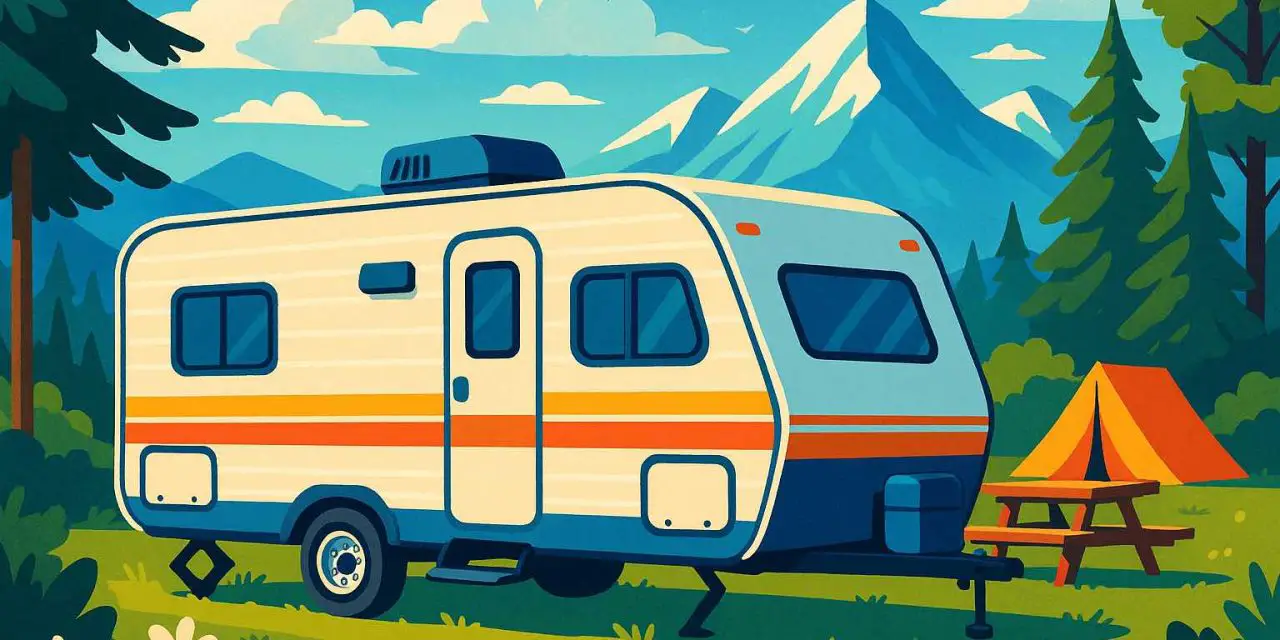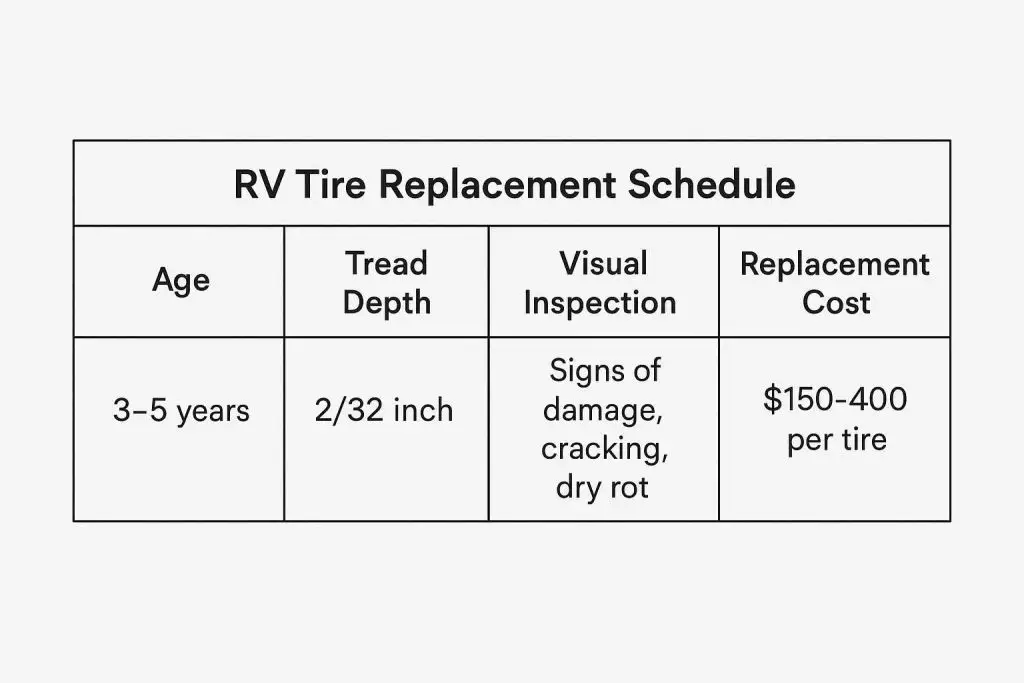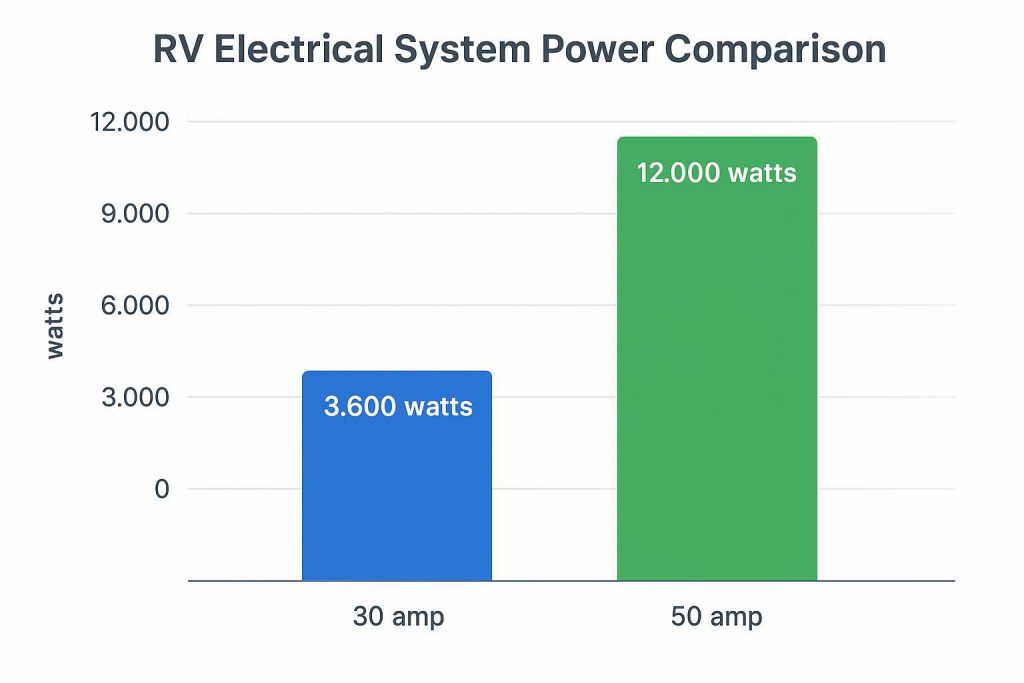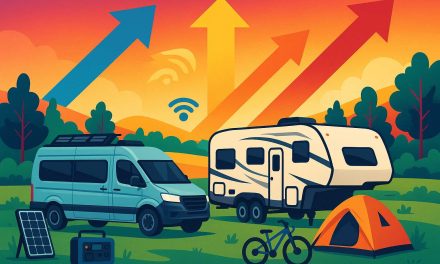Would you like to save this article?
Before you hit the road with your dream RV, discover the hidden truths that could save you thousands!
Are you ready to embark on your RV adventure but feeling overwhelmed by all the “expert” advice floating around? You’re not alone! The RV lifestyle promises freedom, adventure, and unforgettable memories, but there are crucial secrets that dealers and salespeople often don’t share with first-time buyers.
This comprehensive guide reveals 15 essential truths that can save you from costly mistakes and frustrating surprises. From tire safety to electrical systems, we’ll uncover the real-world insights that experienced RVers wish they’d known before purchasing their first travel trailer.
Whether you’re shopping for your first RV or already own one, these insider tips will help you make informed decisions and avoid the expensive learning curve that catches many new RVers off guard. Get ready to discover what the RV industry doesn’t want you to know!
1. Your “Perfect” RV Tires Might Be Dangerous Time Bombs
You need to check your tire’s DOT date code before you even think about hitting the road. That four-digit code stamped on your tire’s sidewall tells you the week and year it was manufactured. For example, “3523” means the tire was made in the 35th week of 2023.
Critical Statistics:
- RV tires should be replaced every 3-5 years, regardless of tread wear
- Tire blowouts can cost up to $10,000 in RV damage
- Most RVers age out their tires before wearing them out
- Replacement costs range from $150-400 per tire RVshare
Pro Tip: That “low-mileage” used RV with 5-year-old tires isn’t a blessing—it’s a liability waiting to happen.
Here’s the kicker: Those pristine-looking tires that have been sitting in one spot for years are actually more dangerous than well-traveled ones. It’s like buying a sports car and being proud it’s never been driven—except this “feature” could leave you stranded on the interstate with a $300 tow bill!
2. RV Travel Isn’t the Money-Saving Miracle You Think It Is
You’ve probably heard that RVing is the cheapest way to travel, but that’s about as accurate as saying unicorns make great pets. The real value of RV travel lies in the lifestyle, not the savings.
Real Cost Breakdown:
- Maintenance and repairs
- Fuel costs (RVs aren’t fuel-efficient)
- Campsite fees and memberships
- Essential gear and gadgets
- Insurance and registration
Industry Reality Check: According to RVIA, the RV industry has an economic impact of $140 billion annually, supporting nearly 680,000 jobs RVIA. This massive economic footprint suggests people are spending serious money on RV travel, not saving it.
Think of RV travel costs like a gym membership—you’re paying for the privilege and convenience, not necessarily saving money. The real payoff is waking up next to a mountain lake where hotels don’t exist and bringing your furry friends along for the ride.
3. The “No Repairs Needed” Red Flag You Should Never Ignore
When a seller claims their RV has “never needed repairs,” your alarm bells should be louder than a smoke detector at 3 AM. Every used RV has needed repairs at some point—even most new RVs require fixes between the manufacturer and your driveway.
What You Need to Know:
- Honest sellers provide repair documentation
- Most new RVs need warranty work before delivery
- Service center wait times can be weeks or months
- Mobile RV technicians are becoming essential
Better Approach: Look for sellers who provide detailed repair history and documentation. This transparency is actually a positive sign that the RV has been properly maintained.
It’s like someone claiming they’ve never needed to change the oil in their car—technically possible if they’ve never driven it, but that’s not exactly a selling point!
4. RV Mattress Sizes Are Basically Random Numbers
Forget everything you know about standard mattress sizes. RV manufacturers apparently use a dartboard to determine mattress dimensions, and they’re about as consistent as weather forecasts.
RV Mattress Size Reality:
- RV Queen: 60″ wide x 75″ long (5″ shorter than regular queen)
- Olympic Queen: Yet another variation
- Bunk sizes: Anywhere from 27″ to 54″ wide
- Many sizes are custom-cut from leftover space
Money-Saving Tip: You can extend your mattress platform or trim foam mattresses to fit odd dimensions. We extended our RV queen platform by 5 inches to accommodate a standard queen mattress.
RV mattress shopping is like trying to buy pants in a world where every manufacturer uses different measurement systems. Good luck finding anything that fits normally!
5. Convertible RV Beds Are Marketing Lies
Those dinettes and jackknife couches that supposedly convert to beds? They’re about as comfortable as sleeping on a bag of rocks and twice as annoying to set up nightly.
Reality Check:
- Convertible beds are rarely used as advertised
- They’re uncomfortable for regular sleeping
- Daily conversion becomes a tedious chore
- Murphy beds and HappyJack systems are exceptions
Better Planning: Plan for dedicated sleeping spaces for each regular traveler. Don’t count convertible surfaces in your sleeping arrangements unless you enjoy nightly furniture gymnastics.
Convertible RV beds are like those “As Seen on TV” gadgets—they sound amazing in the commercial but perform about as well as a chocolate teapot in real life.
6. The Mattress Ventilation Secret That Prevents Mold Disasters
Your RV mattress needs to breathe, or you’ll discover the joys of mold cultivation. When your mattress sits over areas with temperature differences (like unheated pass-through storage), condensation forms underneath.
The Science:
- Your body heat warms the mattress
- Cooler pass-through areas create temperature differential
- Condensation forms without ventilation
- Perfect mold-growing conditions result
Solutions:
- Hyperventilating Aire-Flow systems
- DRICORE DuraDri mattress underlay
- Froli Sleep System
- Simple DIY ventilation modifications
Discovering mold under your mattress is like finding out your favorite restaurant has been serving mystery meat—technically survivable, but you’ll never feel quite the same about it.
7. Payload Capacity: The Number That Actually Matters
You probably know your vehicle’s tow rating, but payload capacity is the number that’ll actually limit your adventures. It’s the difference between confidently pulling a garden wagon and struggling with a wheelbarrow.
Key Calculations:
- Bumper pull trailers: 10-15% hitch weight
- Fifth wheels: 15-20% pin weight
- Subtract everything in your tow vehicle except one 150-lb driver and full fuel
What Counts Against Payload:
- Hitch/pin weight
- Passengers
- Pets
- Tools and gear
- Groceries and supplies
Payload capacity is like your credit limit—exceeding it might work temporarily, but you’ll pay for it eventually with interest that comes in the form of mechanical problems.
8. Your RV’s Cargo Capacity Is Probably a Lie
RVs have cargo carrying capacity limits, and identical make/model/year units can have different capacities based on installed options. This number is crucial but often overlooked.
Where to Find It:
- Yellow sticker on entrance door
- Data sticker on front driver side (towables)
- Near driver’s seat (motorhomes)
Critical Considerations:
- Fresh water weight often not included (8.5 lbs per gallon)
- Storage volume doesn’t equal weight capacity
- Some rigs with massive storage have tiny weight limits
Example: One fifth wheel with extensive under-kitchen storage had only 1,500 lbs cargo capacity—a complete deal-breaker for extended travel.
RV cargo capacity ratings are like restaurant portion sizes—they look generous until you actually try to use them, then you realize you’re working with significantly less than expected.
9. The 30 Amp vs 50 Amp Power Struggle That Changes Everything
Understanding electrical service isn’t just technical jargon—it’s the difference between comfortable camping and constant appliance juggling. The power difference is more dramatic than you’d expect.
Power Availability:
- 30 amp service: 3,600 watts total
- 50 amp service: 12,000 watts total (split between two legs)
Real-World Impact: With 30 amp service, running an air conditioner (15 amps) + water heater (12 amps) + microwave (11 amps) = 38 amps = circuit overload.
Practical Advice: If your desired floor plan offers 50 amp service, get it. Two or more rooftop AC units typically indicate 50 amp wiring.
Managing 30 amp power is like trying to run a restaurant kitchen with one electrical outlet—technically possible, but you’ll spend more time managing power than enjoying your vacation.
10. Why Your RV Surge Protector Isn’t Actually Protecting You
A basic surge protector is like bringing a squirt gun to a fire fight. You need an Electrical Management System (EMS) to truly protect your investment.
EMS vs Surge Protector:
- EMS includes surge protection PLUS overcurrent protection
- Monitors and shuts off power during overload conditions
- Protects against low voltage conditions
- Provides smartphone notifications
Cost Reality: EMS systems cost several hundred dollars but prevent thousands in electrical damage. Low voltage conditions (common in crowded campgrounds) will fry your appliances over time.
A basic surge protector protecting your RV is like wearing a bicycle helmet while driving a car—better than nothing, but you’re still missing the critical protection you actually need.
11. Your RV Battery Has the Lifespan of a Fruit Fly
That single 12V battery powering your RV systems? It’s about as reliable as a chocolate teapot in the desert. Don’t expect overnight boondocking miracles.
Battery Reality:
- 100 amp-hour lead acid battery = 50 amp-hours usable (50% depth limit)
- Furnace and refrigerator can drain 50 amp-hours in 8-10 hours
- Add water pump, lights, and stabilizers = much less runtime
Better Solutions:
- Lithium batteries offer significant improvement
- Multiple batteries extend capacity
- Use battery cutoff switches during storage
Expecting your standard RV battery to power overnight camping is like expecting a smartphone battery to last a week—theoretically possible under perfect conditions, but don’t plan your life around it.
12. The Roof Vent Shortage That Nobody Talks About
Most RVs come with inadequate ventilation, and you won’t realize it until you’re sweating through a rainy day with windows closed. More vents equal better comfort and air circulation.
Ideal Setup:
- One vent per room (bedroom, bunk room, living area)
- Upgraded fans with intake and exhaust functions
- MaxxAir Deluxe vents provide significant improvement
Ventilation Benefits:
- Better air circulation on rainy days
- Improved temperature control
- Reduced humidity and condensation
Most RV ventilation systems are designed like prison cells—technically functional, but you’ll feel trapped and uncomfortable after a few hours.
13. Electric Stabilizers Are Expensive Disappointments
Those fancy electric stabilizers that cost extra? They’re about as effective as a screen door on a submarine. Manual scissor jacks actually outperform them.
Performance Reality:
- Scissor jacks provide superior stability
- Electric stabilizers are more complex and expensive
- Manual jacks are simple and easy to replace
- Hand crank or drill operation (never use impact drivers)
Better Upgrade: Add angled stabilizers against the trailer’s I-beam for dramatically improved stability. DIY 2×4 versions work excellently.
Electric stabilizers are like automatic car washes—they cost more and promise convenience, but you’ll get better results doing it yourself with basic tools.
14. The Roadside Access Myth That Doesn’t Matter
Internet experts obsess over “roadside access”—using your RV with slides in. In reality, this convenience is about as necessary as a chocolate teapot.
Practical Experience:
- Taking time to deploy slides isn’t a major inconvenience
- Rest stop bathroom breaks rarely require slide deployment
- Grocery loading with slides out is manageable
- Overnight parking can accommodate slide deployment
Real Priority: Focus on layout functionality with slides out rather than roadside access. Your comfort during extended stays matters more than convenience during brief stops.
Worrying about roadside access is like choosing a house based on how it looks from the street—nice to have, but you’ll actually be living inside with everything deployed.
15. You’re Becoming an RV Maintenance Expert Whether You Want to or Not
The moment you buy an RV, you’re signing up to become either an RV technician or a maintenance scheduler. There’s no middle ground.
Maintenance Reality:
- Regular upkeep is essential
- Things will break (not if, but when)
- Service centers have long wait times
- DIY skills become valuable
Training Resources:
- Lippert RV Owner School
- National RV Training Academy
- RV Technical Institute
- YouTube (but verify multiple sources)
Support Services:
- RV Fix and RV Help for virtual/mobile technicians
- RVTI’s locator services
- Mobile inspection services
Becoming an RV owner is like adopting a pet—you’re signing up for ongoing responsibilities that’ll teach you skills you never knew you needed.
SOURCES
- RVIA Reports & Trends – RV industry economic impact data
- RVshare – Costs of RV Ownership – RV tire replacement costs
- EcoFlow – 30 vs 50 Amp Systems – Electrical system power capacity
- RV News – Tire Blowout Protection – Blowout damage costs
- Camping World – RV Tire Guide – Tire lifespan and costs
- Bish’s RV – 2024 Sales Report – RV industry sales statistics







